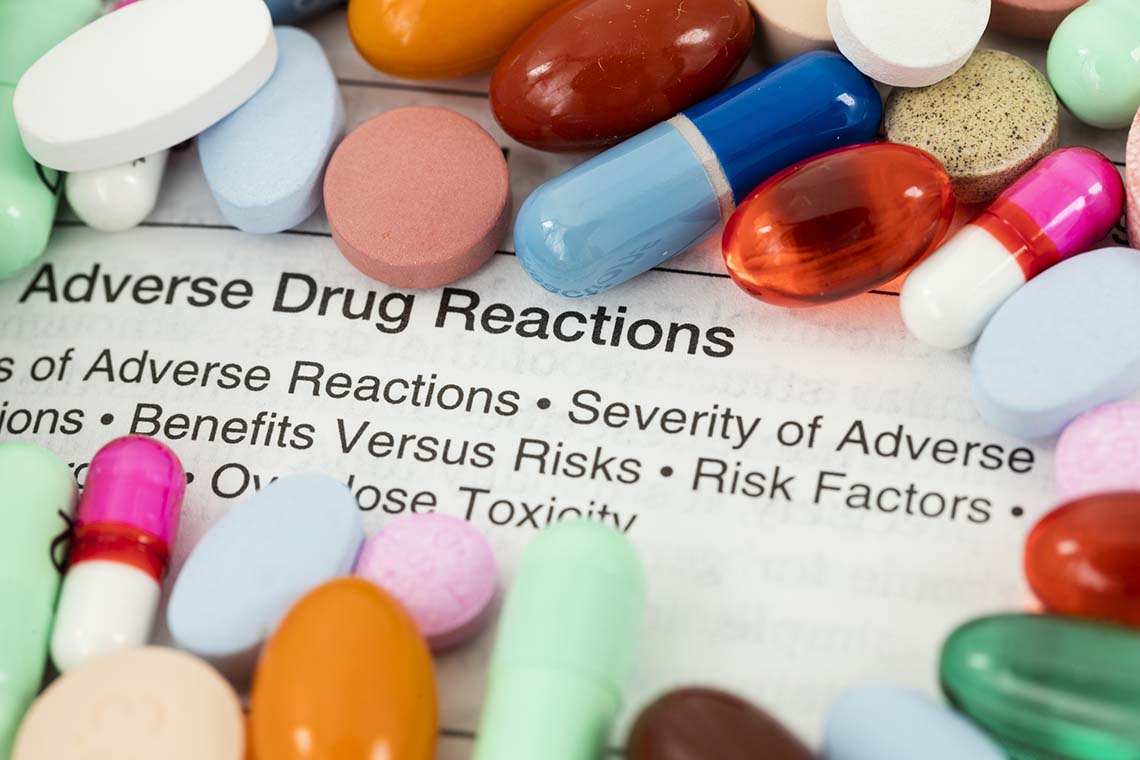Managing Adverse Drug Reactions: A Nursing Perspective
Written by Mariya Rizwan, PharmD
Nurses routinely encounter adverse drug reactions (ADRs) in their practice, requiring keen awareness of varied symptoms like skin rashes, gastrointestinal issues, or respiratory problems. Effective management of ADRs involves assessing, documenting, and potentially altering medication while providing appropriate care. Additionally, nurses educate patients and families about recognizing and responding to ADRs. Their role in reporting these reactions also contributes significantly to pharmacovigilance and ongoing drug safety evaluation.
An ADR is an unexpected, undesired, or excessive response to a medication that results in transient or permanent harm or disability, hospital admission, transfer to a higher level of care, prolonged hospital stay, or death. ADRs can be mild, moderate, or severe. Treatment varies according to the severity and symptoms. Unfortunately, some ADRs are a result of medication errors.
ADRs are different from adverse drug events, in which causality is uncertain, and side effects may be bothersome to the patient and necessitate a change in therapy but are not considered serious.
What Are the Types of Adverse Drug Reactions?
Before we dive into the details of ADRs, let us discuss the types of ADRs. The Food and Drug Administration (FDA) classifies ADRs into two broad categories: type A and type B.
Type A drug reactions are predictable ones that occur due to the drug's primary or secondary pharmacological effects. Dose-related reactions and drug-drug interactions fall into this category. In comparison, type B ADRs are unpredictable. They are not related to the dose or the result of the drug’s primary or secondary pharmacologic effect. Idiosyncratic and hypersensitivity reactions are considered type B reactions.
Let us discuss the subcategories of type A and type B ADRs.
Dose-Related Reactions (Toxic Reactions)
In dose-related toxic reactions, the dose given to the patient is more than their body can metabolize, which eventually results in a toxic reaction. It can happen due to renal or hepatic impairment, drug-drug or drug-food interaction, extremes in ages such as elderly or neonates, or having any severe underlying illness.
Dose-related errors can occur because of preventable errors in prescribing when physiological changes such as weight or underlying illness are not considered or due to poor therapeutic dose monitoring. When prescribing narrow therapeutic index drugs such as digoxin, antiepileptic drugs, aminoglycosides, or anticoagulants, they require regular plasma drug monitoring to know if they exceed the safe dose window. Otherwise, it can result in a toxic drug reaction.
To manage a dose-related ADR, the drug is discontinued temporarily, then the dose is reduced, or the interval between the two doses is increased. In some cases, antidotes may be required, such as Digibind for digoxin toxicity or Kayexalate for drug-induced hyperkalemia.
To prevent a dose-related ADR, healthcare providers should appropriately time therapeutic drug level monitoring, review new drugs in an existing prescription that may alter drug plasma levels of other drugs, and frequently assess relevant laboratory values, especially with narrow therapeutic index drugs.
Drug-Drug Interactions
Drug-drug interactions occur due to an individual drug's pharmacokinetic or pharmacodynamic properties affecting another drug. Pharmacokinetics refers to how the body processes a medication, including absorption, distribution, metabolism, and elimination of the drug. In a drug-drug interaction, the pharmacokinetic properties of one drug alter the concentration of another drug, leading to increased or decreased serum drug levels or an altered response.
Pharmacodynamic drug-drug interactions occur at the receptor site where they alter the dose or binding of another drug to the receptor, leading to increased or decreased free drug available in the blood. It can be additive, synergistic, or antagonistic.
Idiosyncratic Drug Reactions
Idiosyncratic drug reactions are unpredictable and sporadic and occur without any relation to the dose. These drug reactions can show up as fever, blood dyscrasias, cardiovascular effects, or mental status changes. The time frame between the occurrence of a problem and the initiation of therapy is sometimes the only clue linking the symptoms to a medication. Genetic differences in drug-metabolizing enzymes may help explain some idiosyncratic reactions.
Hypersensitivity Reactions
Hypersensitivity reactions are usually allergic reactions that range from mild rashes to nephritis, pneumonitis, hemolytic anemia, and anaphylaxis. Protein drugs such as vaccines and enzymes may also cause hypersensitivity reactions. Another example is hypersensitivity to penicillin and cross-sensitivity with other penicillins or cephalosporins. In a patient’s chart, it is imperative to report allergies, especially medication allergies. The nurse should have epinephrine available and ready access to emergency resuscitative equipment for an anaphylactic reaction.
The Bottom Line
ADRs can become life-threatening for the patient. Therefore, ensure that every safety step is taken to prevent them. Before adding a new drug, check for potential drug interactions with other medications the patient is already taking.
Lastly, remind the patient, if they notice adverse effects such as hives, difficulty breathing, cough, and other symptoms, to report to the emergency room as soon as possible because reactions can be life-threatening.
About the Author:
Mariya Rizwan is an experienced pharmacist who has been working as a medical writer for four years. Her passion lies in crafting articles on topics ranging from Pharmacology, General Medicine, Pathology to Pharmacognosy.
Mariya is an independent contributor to CEUfast’s Nursing Blog Program.
Please note that the views, thoughts, and opinions expressed in this blog post are solely of the independent contributor and do not necessarily represent those of CEUfast. This blog post is not medical advice. Always consult with your personal healthcare provider for any health-related questions or concerns.
If you want to learn more about CEUfast’s Nursing Blog Program or would like to submit a blog post for consideration, please visit https://ceufast.com/blog/submissions.




